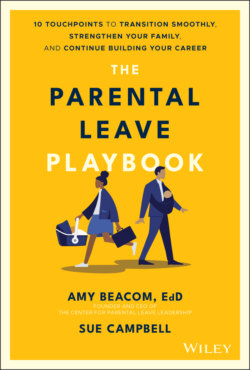Читать книгу The Parental Leave Playbook - Sue Campbell - Страница 18
Working Families Suffer
ОглавлениеAs if it were not enough that most parents lose wages while staying home to bond with a new child, many families who welcome a child by giving birth face exorbitant health care costs and inadequate health insurance. Big hospital bills hit just when paychecks shrink or temporarily disappear.
New parents are also at risk for mental health challenges during this period, regardless of their path to parenthood (birth, adoption, surrogacy, etc.). Many parents suffer in silence without ever getting proper care, fearing stigma or even that their children will be taken from them if they confess to a serious struggle.
When it is time to go back to work, they often need to seek and pay for infant childcare (and in many cases, care for older children), the average costs of which range from $9,000 to $24,000 per child per year for in-center care, depending on where you live.3 The cost to hire a private nanny can run even higher.
High childcare expenses often drive one parent to leave the workforce—or quit a more formal career in favor of work in the gig economy, which provides more flexibility but fewer (if any) benefits and often lower wages. In two-parent heteronormative relationships, most of the time, it is the mothers who stay home and care for the children, both because of caregiving stereotypes and because they often earn less. As a result, our workplaces and society miss out on their talent, and these women lose out on advancement opportunities, benefits, retirement savings, and more. The coronavirus pandemic that began in 2020 put even more pressure on working families, particularly mothers. In fact, according to the National Women's Law Center, between February 2020 and January 2021, more than 2.3 million women, compared to nearly 1.8 million men, were pushed out of the labor force, meaning they were not working or looking for work.4 That's over a half million more women than men.
These are tough circumstances by any measure, and many families face additional challenges if fertility, pregnancy, or birth are complicated and if mom or baby end up having medical issues. Some parents who have waited until their late thirties or early forties to have children may also join the “sandwich generation,” caring for their aging parents while also caring for young children and trying to work.
In Chapter 16 we will cover additional challenges such as those faced by single parents, those who belong to underrepresented and marginalized communities, LGBTQ+ parents, and more.
